
UVC
How UVC affects microorganisms and inactivation mechanism
UVC (between 100nm and 280nm) is not observed in nature because it is absorbed by the ozone layer in the atmosphere. This range is called germicidal because it has the ability to inactivate microorganisms such as viruses and bacteria. In humans this radiation is absorbed by the epidermis and prolonged exposure can cause burns, skin irritations, cataracts, and eye infections.
When a cell is subjected to UV-C radiation, it penetrates the cell wall and its energy is absorbed by proteins and the cell’s DNA. The UV-C light damages the protein structure and the DNA undergoes a chemical change, breaking its molecular bonds. The photochemical damage caused to the nucleic acid prevents its replication.
The effectiveness of this UV-C disinfection process depends on the intensity of the radiation, exposure time, relative humidity, and the presence or absence of shadow areas and particles that can shield the microorganisms from the radiation.
The action of UV-C is hindered by shadow areas, i.e. areas that are not 100% exposed to UV-C light. The greater the degree of shading (partial shadows), the longer it takes to reach the dose needed to inactivate the particles.
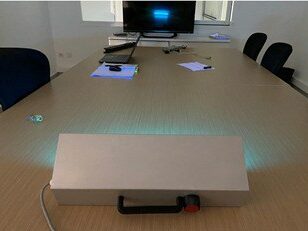
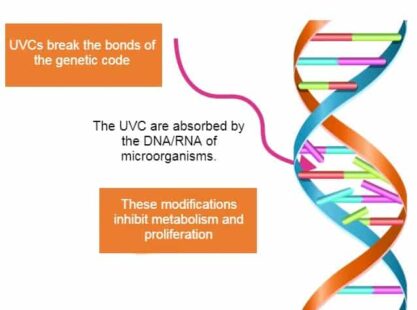
CleanCloset: Armário de Desinfeção

Portable UVC
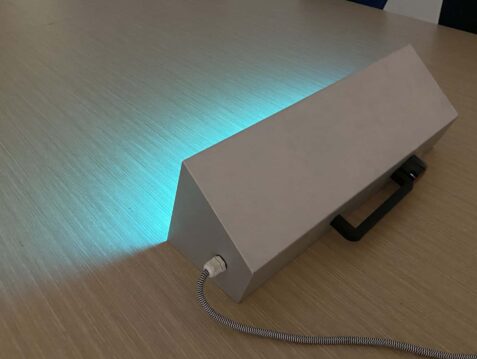
UVC Dangers and Protection
UVC is dangerous for living beings (people, animals and plants). Therefore, it must be ensured that they are not exposed to UVC for too long. On the other hand, UVC is extremely easy to stop! All it takes is one acetate to do it. The maximum daily dose that humans can be exposed to, according to the European parliament’s directive 2006/25/EC, is 6mj/cm². The consequences of excessive exposure are damage to the eyes (possibility of cataracts) and to the skin (sores). Only exposed parts of the body are likely to be affected. Dynasys has instrumentation that measures the UVC doses received and indicates how long a person with exposed body parts can stay in the room without danger.
Instrumentation – Dosimeters and EU Directive 2006/25/EC
Dynasys uses and markets instrumentation manufactured and certified in the European Union. The instrumentation includes a wireless dosimeter with cosine correction. This equipment measures instantaneous power and cumulative dose. Being wireless allows measurements to be made in complete security.
The second device we use detects UVC radiation in workplaces and in accordance with the European Parliament’s Directive 2006/25/EC on minimum health and safety requirements regarding workers at risk of receiving UVC radiation. Dynasys uses this equipment to ensure that no UVC radiation leaks out of equipment developed by Dynasys.
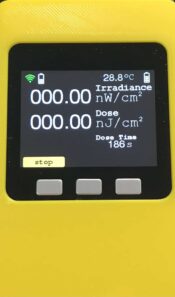
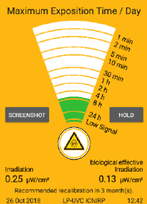
Dynasys is available to evaluate custom projects in this area. Contact us!
Dynasys – Engenharia e Telecomunicações, S.A.
Centro Empresarial Sado Internacional – Edifício E4
Estrada Nacional 10, Vale da Rosa
2910-835 Setúbal, Portugal
Tel: +351 265 706 900
Fax: +351 265 706 909
info@dynasys.pt
comercial@dynasys.pt

